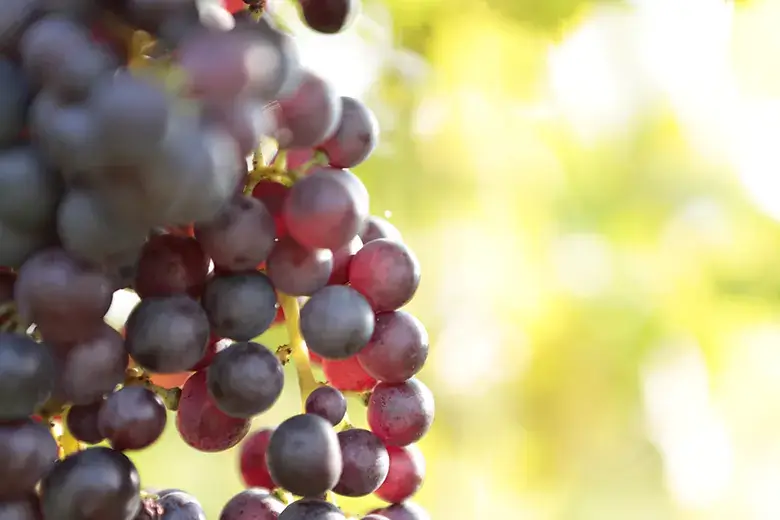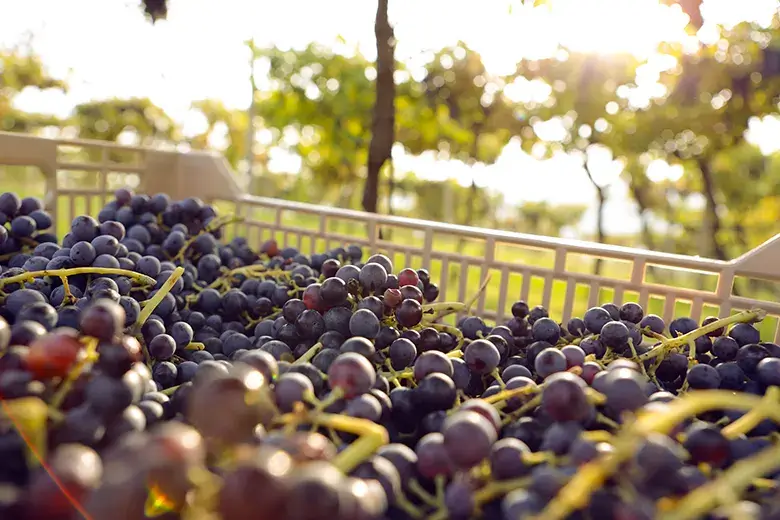The terroir
where all beginsVine and olive are ancient trees requiring time, patience and respect.
In order to give their utmost they both need favourable, but not easy conditions, as if they would claim the due respect.
An ideal climate and location:
- not too abundant rainfalls concentrated in spring and autumn;
- sunny, hot and long summer going on till almost mid-Autumn, allowing lengthy and complete maturations;
- a well windy and sunny position, where fruits grow strong, naturally protected against molds and parasites.
These are the main characteristics that a land must have to be suitable for viticulture: all satisfied on the slopes of our lands.
On the contrary, soil is astonishing…
Just under the turf, it shows so rich in skeleton that at a first glance you can guess not to be able to cultivate anything. Against any appearance the combination of this particular kind of limestone-clay ground together with the great richness in subsoil aquifers, also thermal ones, represent a plus for vineyards and olive groves, spurring them to be strong and rewarding them at the end with great abundance of nourishment.
Fruits born on this strange balance between difficulty and luxuriance are marked by very intense tastes.
The vineyards
Nature and time work with us, they can be great teachers and allies, therefore the whole work made on the ground and on the vine – or better, for the ground and for the vine – is deeply marked by choices with no environmental impact.
For this reason we make our utmost to take care of the choice in the exposure and vine system, well irradiated and airy, bunches grow healthy and strong without further interventions.
Therefore, we do not have any irrigation systems in the vineyards. Avoiding to try to make the most from vines in order to make them produce more than what is naturally possible for them, roots have been stimulated to look for water very deeply (even 10-15 meters), protecting each vine against oddities of drought and keeping a constant quality of grape.
In winter and spring months in the vineyards we adopt a temporary grassing aiming on one side at monitoring the greenness of the vine so fostering the quality and the balancing of the grapes; on the other to keep very good temperature and humidity in the land.
Unfruitful buds, come out from old wood or in excess, are manually removed(spollonatura). In due time follow the operations of “binding” and “topping” which give branches shape and directing to the growth, they foster the continuity of the photosynthesis during the whole maturation.
Once ended the step where from the flower berries come out(allegagione), a slight manual defoliation takes place on the side where sun arises, in order to balance the exposures and, when necessary, a bunches’ manual thinning, carried out selecting the best irradiated ones.
Also the harvest occurs in the perfect respect of the times nature claims in each season: the date is established after a careful control of the grapes’ features, included a a tasting analysis on the field and, only when we are sure to reach the full polyphenolic ripeness, we start a manual grape harvest, by selecting bunch by bunch on the vine.
This patient and scrupulous work represents the fundamental basis in order to produce wines with very good concentration and right balance among structure, complexity and longevity.
The Vines
Different grapes for wines with a unique taste
There are different kinds of grape, each one with decided physical and organoleptic characteristics. Being able to choose, process and dose them represents the heart of the art of producing not only good wines, but also full of personality. The most curious people here can find a short introduction to the grapes used to produce our wines.
Corvina
This grape gives wines a fine touch, together with an unmistakable note of ripe cherry
Corvinone
Corvinone is a vine for much time considered just a clone of Corvina variety; only in 1993, thanks to genetic researches, they discovered that this grape holds its own genotype. It shows some similarities with Corvina, such as very big berries, protected by a thick and hard skin with a dark blue colour, but its bunches are really bigger (see also wikipedia)..
Well suitable for withering this grape gives wine, a part from a nice colour, the characteristic almond taste.
Garganega
It is the most important white grape in Verona surroundings, the main vine used in Soave wine production. The vine relies on a long biological development and it is therefore featured by a late maturation. Bunches are winged and show a stretched shape, while their berries have a hard and very yellow skin; sometimes, it is even reddish when it reaches a complete ripeness(see also wikipedia)..
Its relatively low acidity, makes this vine particularly suitable for the production of wines which have to be enjoyed young but, as far as hardness of berries’ skin is concerned, it is also fit for withering in view of the production of Recioto wines.
Molinara
Its name comes from the abundant bloom covering berries, so as to make them almost “floured” as they were first in a mill. Vineyard resistant to molds but sensible to cold, it needs to be cultivated on the hill in dry, well airy and sunny locations. The bunch has middle size with a pyramidal shape slightly stretched and reaches lately its ripeness (see also wikipedia).
It gives wine smells of strawberries and raspberries together with mineral notes and a good alcoholic level.
Oseleta
Very ancient autochthonous vine, it is thought that it may be an evolution of a variety carried here by Greeks in Roman domination times or, more probably, a domestication of wild local grapes. The vine risked to go out several times: because of extraordinary climate adversities, diseases coming from other lands in various ages, and due to winegrowers’ abandon, due to its low production. Supposedly, its name comes from the high appreciation shown by birds, (“osei” in Veronese dialect). Always in our vineyards, this grape was used in blend with other varieties, even if in extremely low percentages. In Nineties, we decided to dedicate to it a whole vineyard in order to produce Entis.
Its berries are rich in anthocyanins and tannins (giving the wines a nice colour also in long ageing periods) and featured by a thick and hard skin allowing grape to be particularly fit for withering.
Raboso Veronese
Grown from a spontaneous blend between Raboso Piave and white Marzemina. We do not know if it owes its name to the homonymous Piave’s tributary or to the high and aggressive, almost “angry” acidity of the must. Surely, it deals with a “hard” grape, which, vinificated in purity, produces a wine with a difficult drink, intense acidity with very tannic scents of morello cherry (see also wikipedia)..
Due to these tough features this vine is scarcely spread, and irremediably oriented to be forgotten, nevertheless, if wisely measured out, it can give a whipping of unique personality to structured wines.
Rondinella
Very rustic vine, it stands critical weather conditions like frost, various diseases and water stress. There are rare historical information about this variety. The first traces date back to the end of 19th century, when the vine was described with strong and short branches, rather small leaves and middle sized bunches with small, not too packed, dark, sweetish berries with hard skin.
(see also wikipedia)..
Well fit for withering thanks to its remarkable resistance to infections caused by mould during this process. Vinificated in purity it shows similarities with Corvina, even if with less strength; it is very good for the production of wine blended with other grapes.
Sign up for our newsletter
Stay up-to-date on Provolo winery news, promotions and trivia and get a discount code on your first order now
• NEWSLETTER
Open from Tuesday to Saturday: 8.00 / 12.00, 14.00 / 18.00.
Closed on Sunday and Monday
Provolo Winery | Via San Cassiano, 7, 37030 Mezzane di Sotto, Verona - Italy


